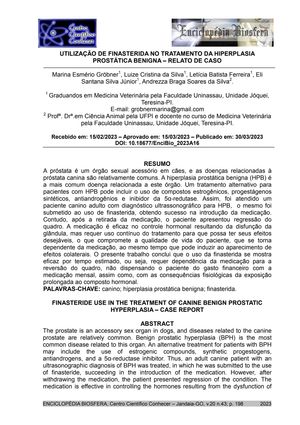TLDR Finasteride effectively treats BPH but requires continuous use to maintain benefits.
The case report discusses the use of finasteride, a 5a-reductase inhibitor, in treating benign prostatic hyperplasia (BPH) in a 10-year-old German Shepherd. The treatment initially succeeded in reducing prostate size and alleviating symptoms, but the condition regressed after discontinuation of the medication. Continuous use of finasteride is necessary to maintain its benefits, which can lead to dependency and potential side effects. The study highlights the effectiveness of finasteride in managing BPH but also underscores the need for ongoing treatment and the associated financial and physiological implications.
April 2020 in “The FASEB Journal” Finasteride may cause lasting sexual issues by altering specific genes in human cells.
 December 2020 in “Current Sexual Health Reports”
December 2020 in “Current Sexual Health Reports” Finasteride can have lasting negative effects on brain function and behavior by disrupting neurosteroid production.
 8 citations
,
January 1991 in “European Urology”
8 citations
,
January 1991 in “European Urology” Finasteride lowers DHT levels and raises testosterone in a dose-dependent way.
 9 citations
,
October 2013 in “PLOS ONE”
9 citations
,
October 2013 in “PLOS ONE” Dutasteride works better than finasteride for preventing and treating prostate cancer.
 23 citations
,
July 1993 in “Pharmacotherapy”
23 citations
,
July 1993 in “Pharmacotherapy” Finasteride treats enlarged prostate and baldness, but may cause limited urinary improvement and sex-related side effects.
 11 citations
,
May 2002 in “The Journal of Urology”
11 citations
,
May 2002 in “The Journal of Urology” Finasteride doesn't harm bone density in older men with BPH.
 17 citations
,
November 1997 in “Andrology”
17 citations
,
November 1997 in “Andrology” Finasteride effectively treats enlarged prostate and male baldness, improves symptoms of hirsutism in women, but doesn't work for acne, and may delay prostate cancer progression with few side effects.






